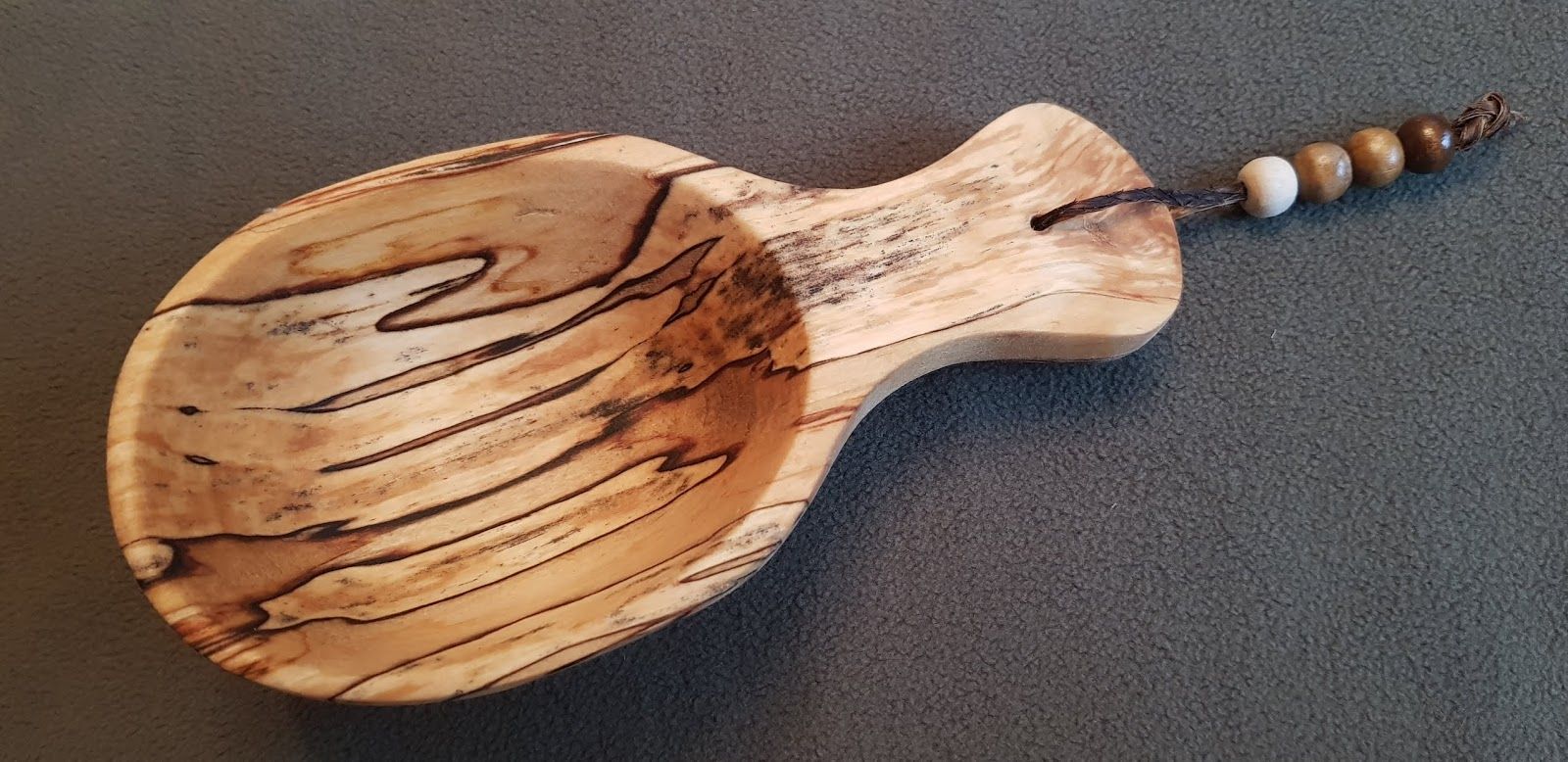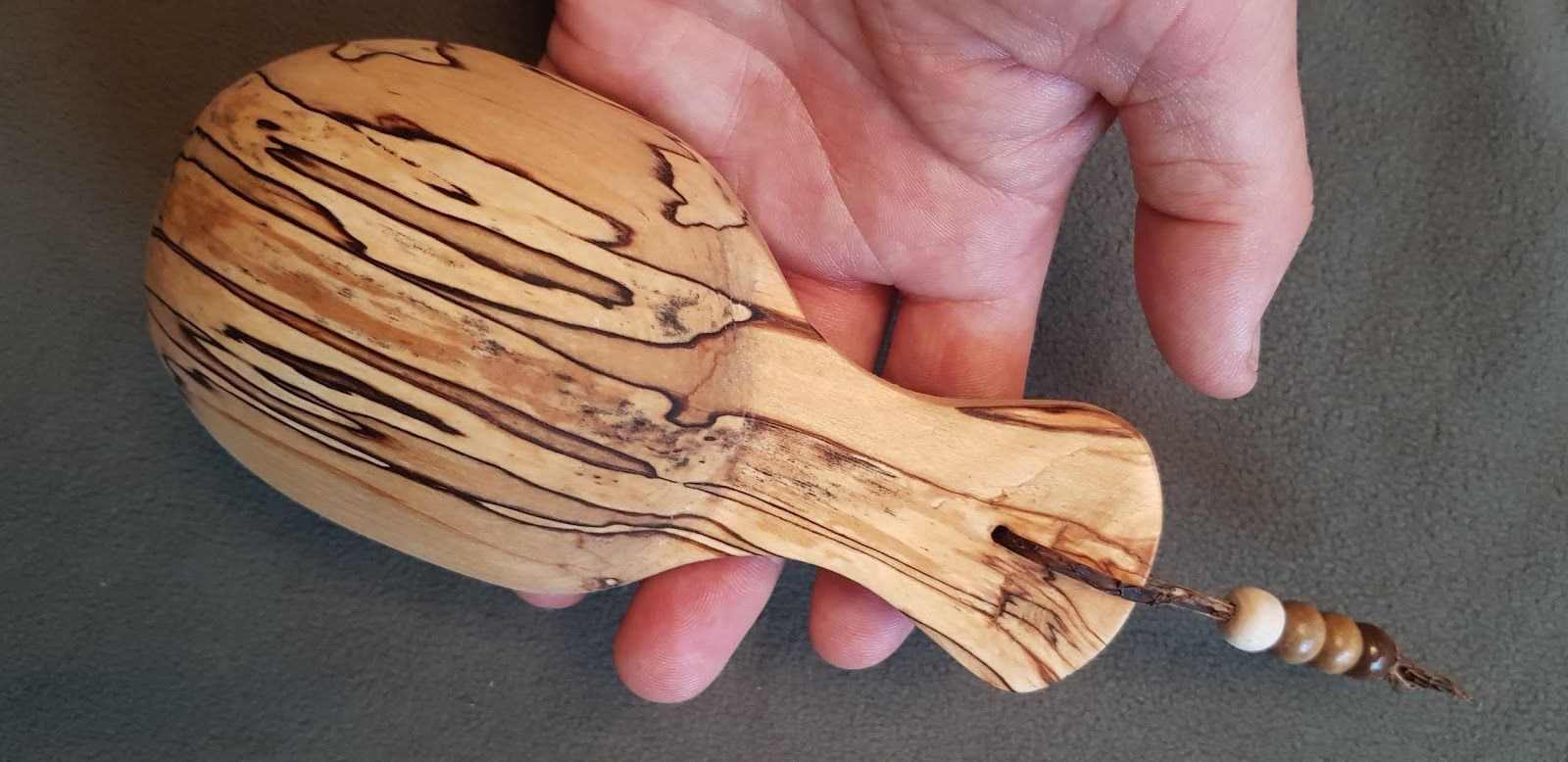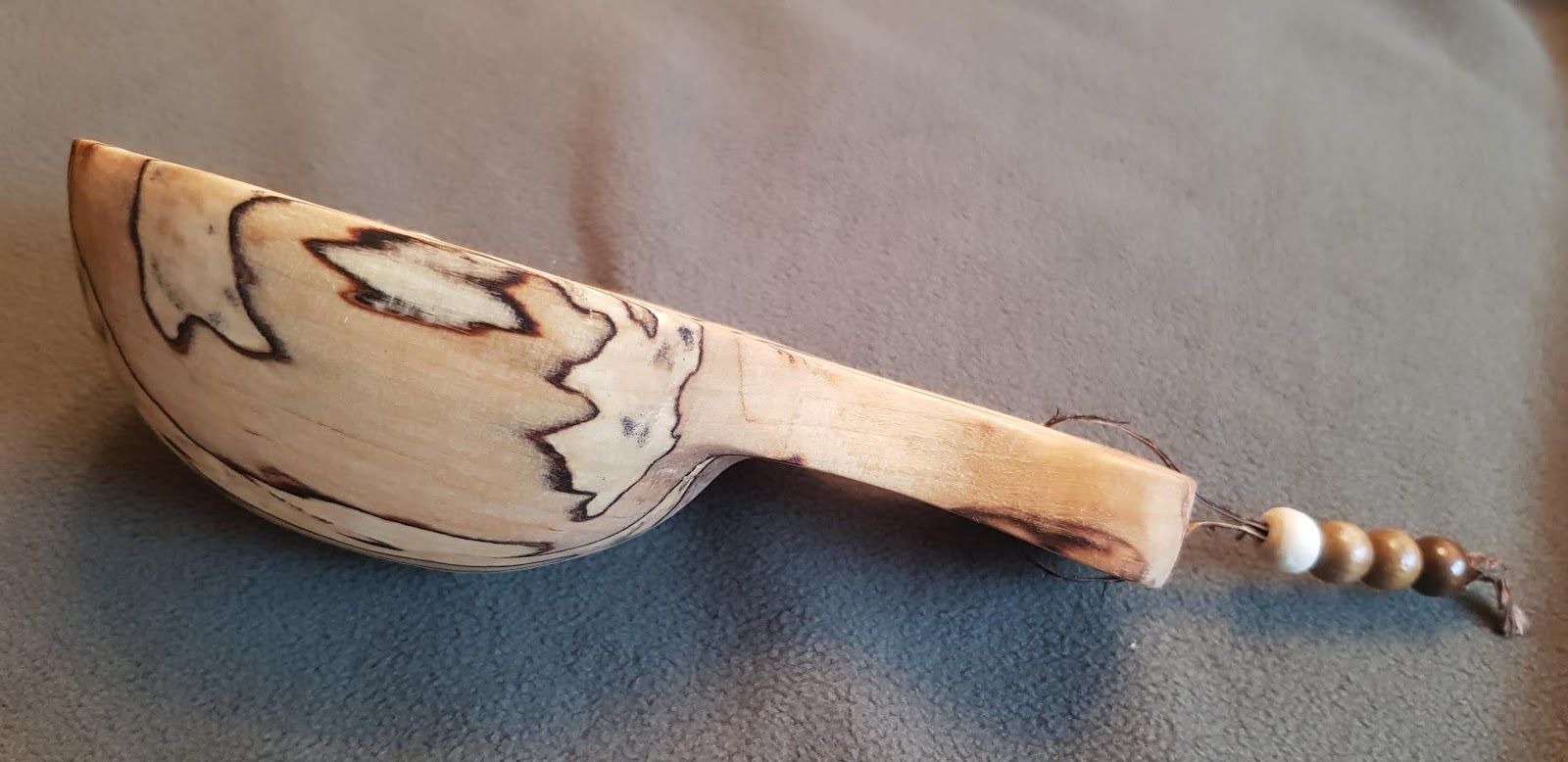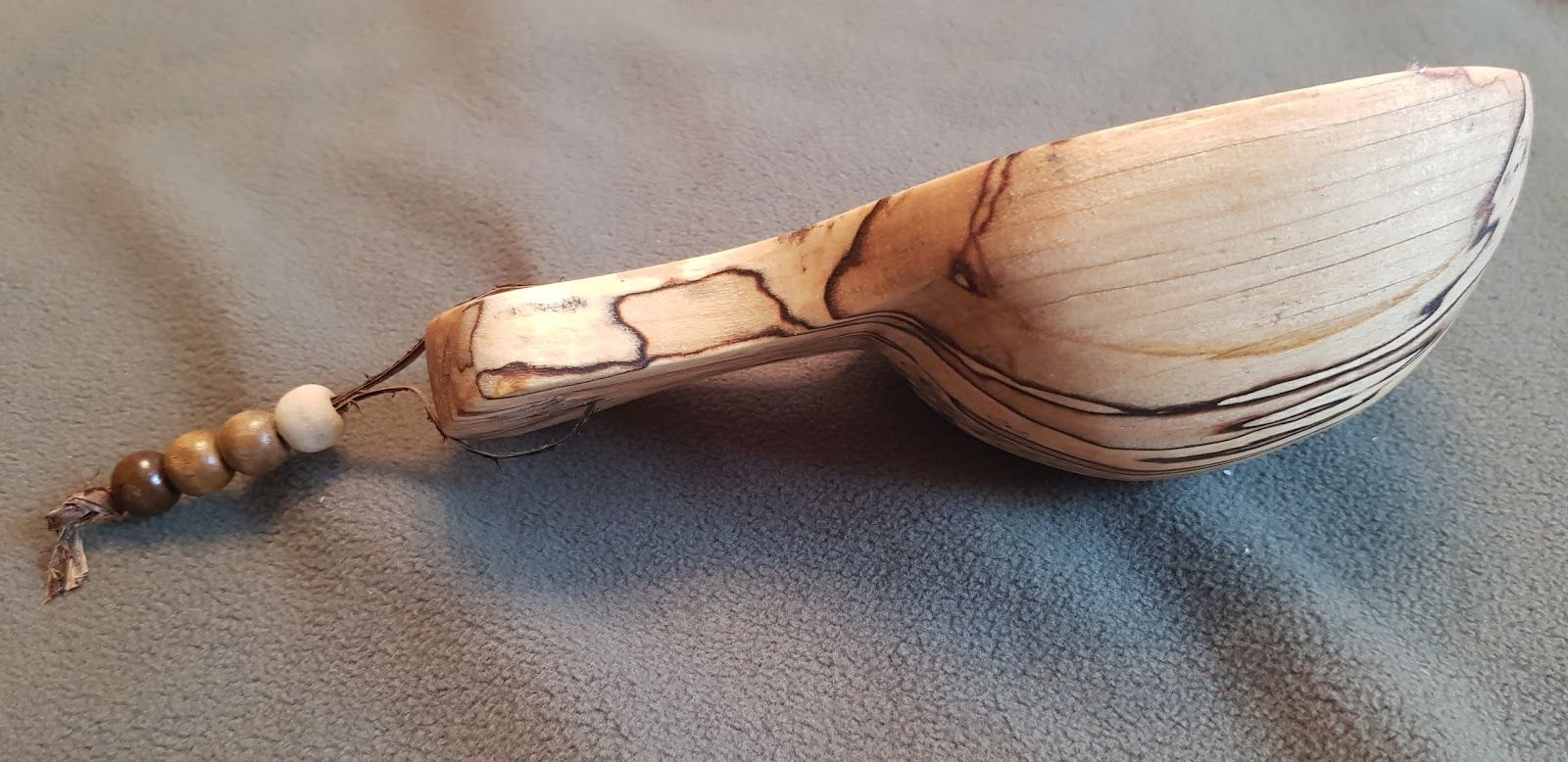Thought I'd sling some pictures up of a kuksa I've recently completed. It's spalted Birch and I spotted it, rather fortuitously, in a big of Big K firewood. It is kiln dried and was hard in parts and fragile on the peripheries and several bits did come off during it's making. I've left the odd minor pock mark and scratch as I was worried that I may overwork the wood and lose some pattern/ have another bit break. The oil used on it was walnut and the thong is a strip of salmon skin leather.








Last edited:
